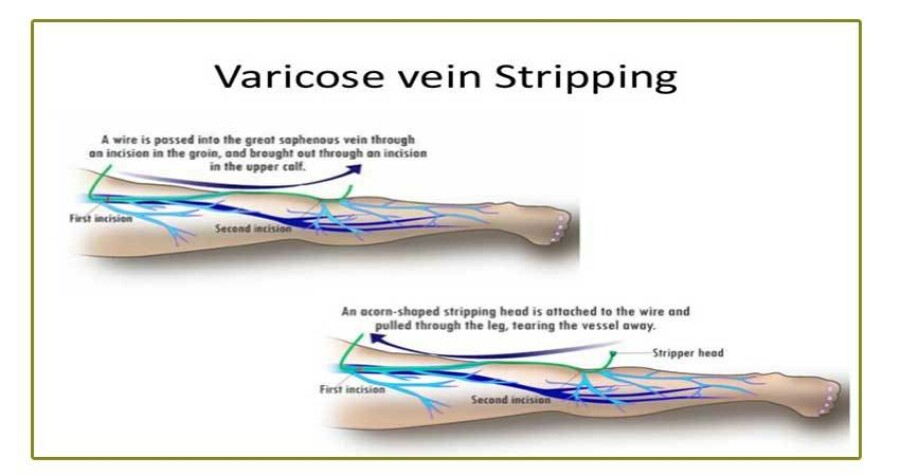Difference between vein stripping and the procedures CVR performs?

Vein stripping is a surgical procedure usually performed under general anesthesia in the hospital setting to remove diseased saphenous veins and their associated varicose veins. The surgery involves making one or more incisions in the groin or leg to gain access to the diseased vessel. Next, a special wire is inserted into the vein and the vein is then pulled out from the body. The incisions are stitched up and pressure dressings are applied to the incision. An overnight hospital stay is not uncommon. Patients may be advised to avoid any physical activity for days or weeks. Vein stripping has been associated with up to a 8% risk of infection and up to a 25-60% failure rate due to neovascularization. Because of the high failure rates secondary to neovascularization, the relatively high morbidity and recurrences associated with saphenous vein stripping, as well as, the high failure to strip completely in many patients, vein stripping today is rarely performed.
Vein Stripping and CVR Vein Treatments
CVR performs endovenous thermal ablations to treat diseased saphenous veins and associated varicose veins. Endovenous thermal treatments are minimally invasive, office based treatment alternatives to surgical stripping of the great saphenous vein. Instead of removing the saphenous vein, the vein is sealed closed in place by using a heat source generated by either laser or radio-frequency catheter. The skin on the inside of the lower leg is anesthetized and a small fiber or catheter is inserted through a needle stick into the diseased vein. Pulses of heat are delivered inside the vein, which causes the vein to collapse and seal shut. This procedure is done in-office under local anesthesia. Following the procedure a compression bandage is placed on the treated leg. Patients are able to walk immediately after the procedure and most individuals are able to return to work the same day. Endovenous thermal ablation treatments are FDA-approved for the treatment of the greater saphenous vein. These treatments are the first line recommended treatment option for diseased saphenous veins by the Society for Vascular Surgery and the American Venous Forum.